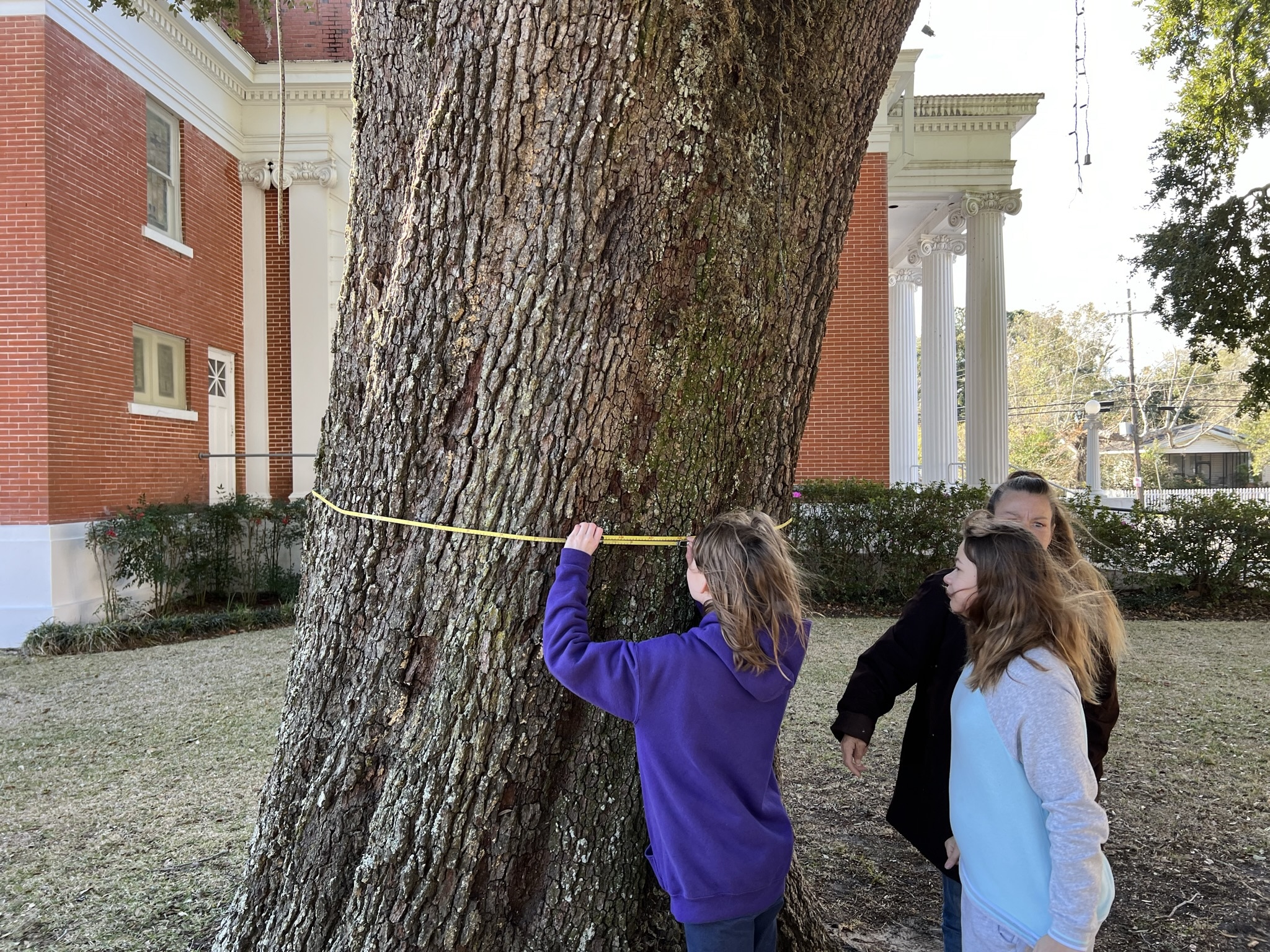Southern Live Oaks characterize the coastline of the southern U.S. like no other plant. They define what is known as the maritime forest, the narrow band of shoreline forest that is influenced by the periodic impacts of winds, waves and salt from, in our case, the Gulf of Mexico. Their evolution in what is for plants a stressful environment has given them qualities that support resilience and long life. They can live to be hundreds of years old.
Our love of these giants is more than just admiration of their size and age. Their majestic trunks, large, draping limbs that touch the ground, and Spanish Moss and Resurrection Fern-draped branches inspire us. They also protect us from the very natural forces that they tolerate – hurricanes that have tested them, in many cases, over hundreds of years. As many of us witness after major storms, their branches are often bare of leaves and some branches snapped, but they remain standing, nonetheless. As I and others have decreed after such impacts, this is not the first hurricane these trees have seen.
And yet, we humans often add additional stress to these resilient survivors by not honoring their space, both above and below ground. We build too close to them and cut and cover their far-reaching roots, that reach out beyond the extent of their branches. We fail to see how this causes their decline, thinking that they are still here, so all is good. We can do better!
It can start by taking the time to celebrate these icons of our urban forest – in their environment – that many have occupied long before Europeans showed up on this shoreline. One easy step is to measure and register these trees with the Société Des Arbres. Established in 1971 in Ocean Springs, this organization is dedicated to celebrating the large canopy trees of our communities through a process of measuring, naming and registering them.
In the society’s own words, “Among the purposes of the organization are to preserve all species of trees which possess a living association with historical events of the area; conserve and protect trees and groups of trees which by their existence enhance the aesthetic and environmental values of the area; establish a permanent registry of such trees, citing their names, description and location; to declare all trees properly registered to be indigenous natural assets possessing intrinsic value worthy of area protection and other worthwhile reasons for the Society.”
It was with this in mind that three local community organizations set about to honor this goal through tree measurement demonstrations in Ocean Springs and Moss Point. The Ocean Springs Environmental Alliance partnered with the Historic Ocean Springs Association to conduct a tree measurement event in Marshall Park in November of 2021. A similar event at the historic Dantzler United Methodist Church in Moss Point in February of 2022 was sponsored by the Rotary Club of Moss Point. The goals of both were to celebrate and promote the heritage trees of both communities and reintroduce the Société Des Arbres as a partner in what for all of these organizations is a long-term project.

The underlying messaging of these efforts is focused on raising awareness of our iconic maritime forest, that still defines the Gulf Coast, before it fades away as a minor element of our communities. These heritage trees add much more than beauty. They shade our ground, refresh our air, protect us from storms, and frankly should be recognized as adding economic value to property. But, as with many other topics, unless we preach it, it will not come to pass.
For more information about measuring and registering trees, visit the websites of Société Des Arbres or the Mississippi Urban Forest Council. Consider measuring, registering, naming, and celebrating your iconic trees.
Hope to see you in the great outdoors!